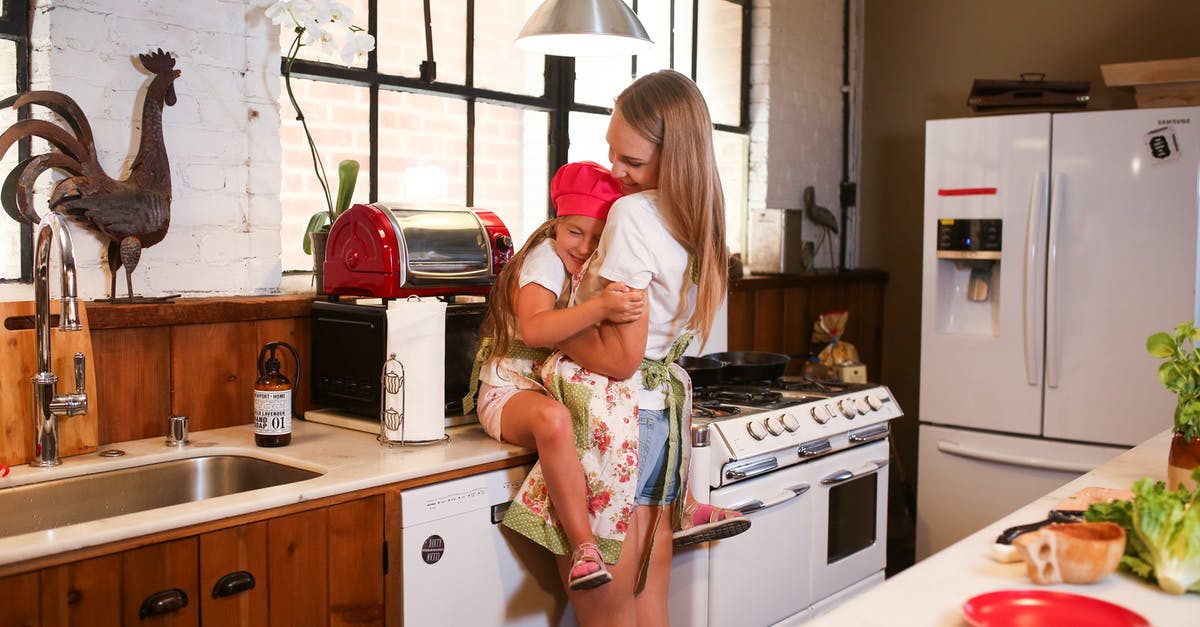Do I have to adjust oven cooking times from recipes for more / less food?

In an oven, when following cooking times from a recipe, do I have to adjust times if I change quantity? I don't mean thicker or thinner food, I mean more or less of the same size, like e.g. more or less potato wedges.
Or does the thermostat in the oven just make the burner stay on for different times naturally and thus deliver the same amount of energy per mass of food over time (assuming I don't put too much food in at once).
Best Answer
Many ovens do not have a thermostat. They have a timer, which turns the heating elements on and off in a predetermined pattern. As a result, the oven is a very imprecise heating instrument. It is frequently miscalibrated, and even for a calibrated oven, the temperature you set is the average temperature, while the actual temperature of the air inside varies in a roughly sinusoidal pattern, and the internal temperature of the baked good is even more irregular depending on its composition, location, choice of baking tin, oven type, etc. Even if the oven has a thermostat, it only (roughly) regulates the air temperature, not the internal temperature of the food.
As a result, the change in heating speed caused by adding a little bit more mass is really insignificant when compared to the huge variability of heating speed which is inherently present between ovens.
Luckily, many recipes are not very sensitive, and taste good no matter how much heat transfer actually happened during the time prescribed in the recipe. For these, you don't have to sweat it, keeping the original time is mostly OK. If you create major occlusion (e.g. two separate pans of gratin above each other), add some time by gut feeling, and check frequently for doneness toward the end.
For sensitive recipes (roasts, custards, some cakes), baking by time doesn't work anyway. The best you can expect from a time given in the recipe is a rough guide to help with planning when to start preparation for a meal. You have to always bake these until they are done, regardless of what the recipe says. In this case, you again don't have to do any time adjustments, because you are not baking by time.
To summarize, no, you don't really have to do any adjustments to time. Just bake everything until it is done, and if your time-based expectations were wrong, adjust based on doneness.
Pictures about "Do I have to adjust oven cooking times from recipes for more / less food?"



Quick Answer about "Do I have to adjust oven cooking times from recipes for more / less food?"
To summarize, no, you don't really have to do any adjustments to time. Just bake everything until it is done, and if your time-based expectations were wrong, adjust based on doneness.Does the amount of food in an oven affect cooking time?
The size and the amount of "work" the oven needs to do is the exact same on each item individually ". It's true that the oven has to deliver the same amount of energy to each item. So in total it has to deliver twice as much. It only has a finite amount of power available and so it takes longer.How do you adjust cooking times for smaller portions?
Cooking Time: If you're preparing larger or smaller portions, it may alter your cooking time. Allow for more time if making a larger portion. For smaller portion check the dish at least 10 minutes early to see if it's done. You don't want to overcook the dish.Does more items in an oven take longer to cook?
The dishes will typically take 15 percent longer to cook than if only one is cooking, so adjust the time accordingly. To ensure even cooking, make sure the oven is fully preheated before inserting dishes, and rotate the dishes halfway through.How do you adjust cooking time for a half recipe?
If you're saut\xe9ing or searing a halved recipe, keep the heat and cook time the same but size down your pan. If you're cooking a halved recipe in the oven, keep the oven temperature the same but size down your cooking vessel and reduce the cook time by 1/3 \u2014 but check on it as you go.Why is My Oven Cooking Unevenly?
Sources: Stack Exchange - This article follows the attribution requirements of Stack Exchange and is licensed under CC BY-SA 3.0.
Images: RODNAE Productions, RODNAE Productions, RODNAE Productions, RODNAE Productions
